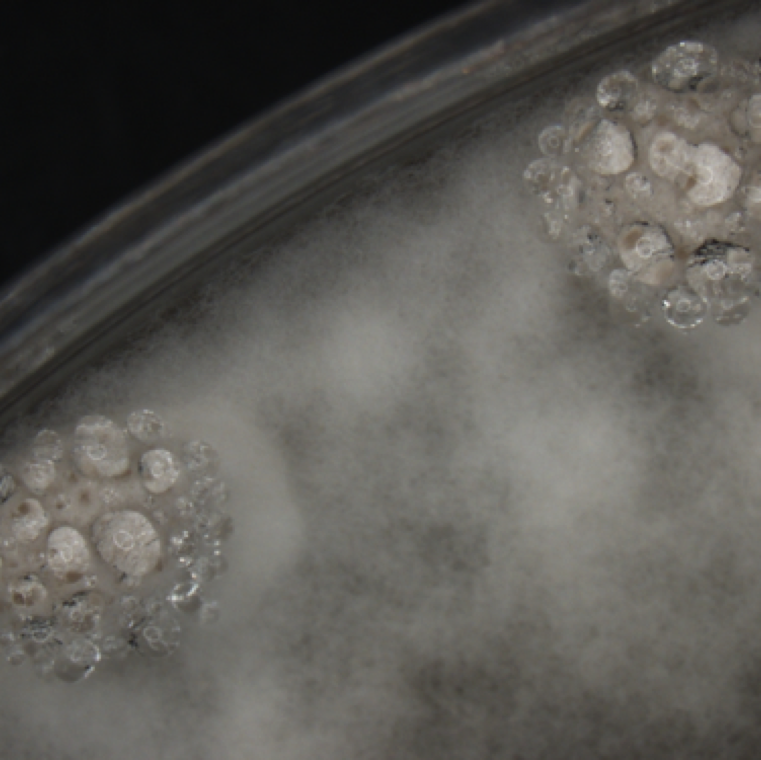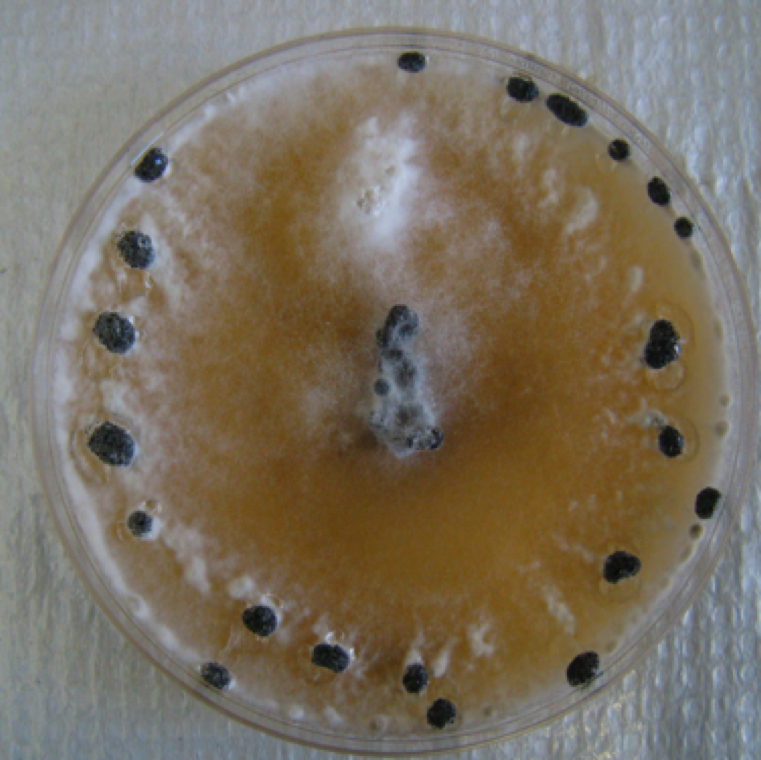

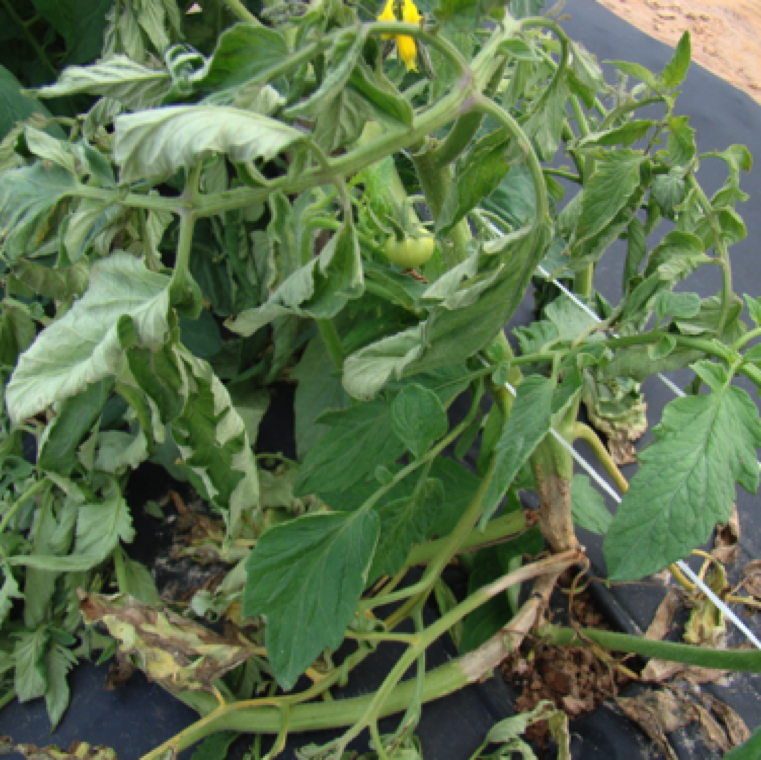
Initial symptom of Sclerotinia blight is the wilting of plants. When you take a close look at the bottom of the plant you will notice stem blight nearing the soil line.
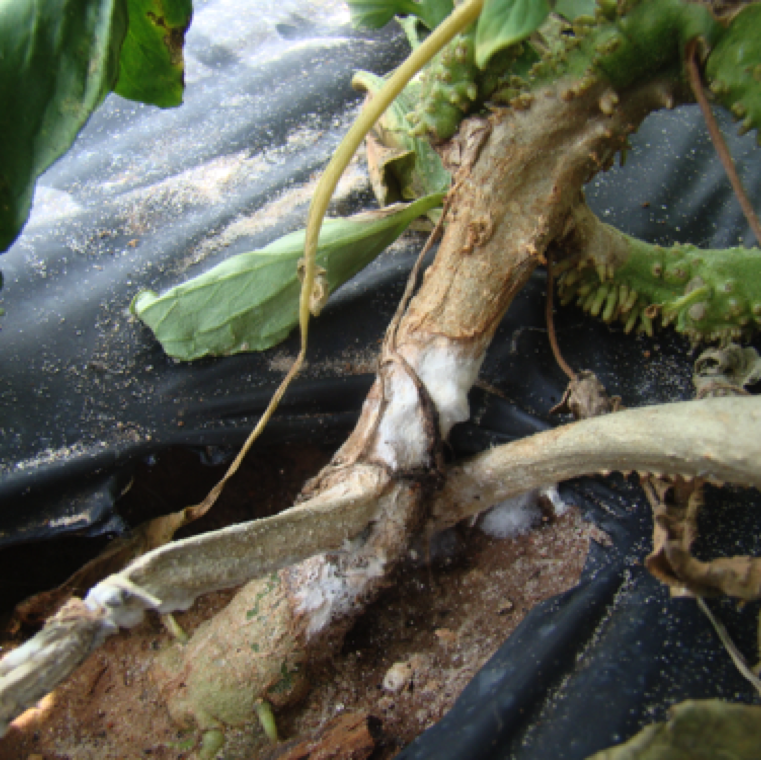
You will see formation of white fluffy mycelium on the blighted stem and the soil line similar to southern blight disease caused by Sclerotium rolfsii.
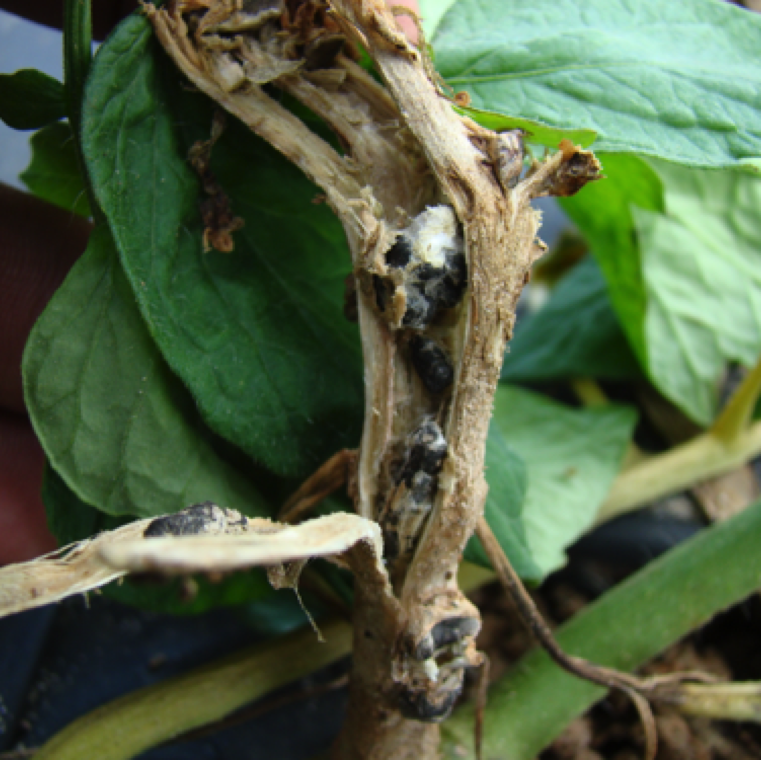
You can confirm the disease by opening the blighted stem, where you will see black sclerotia. Sclerotia is a mass of fungal mycelium that condense together with the accumulation of melanin.
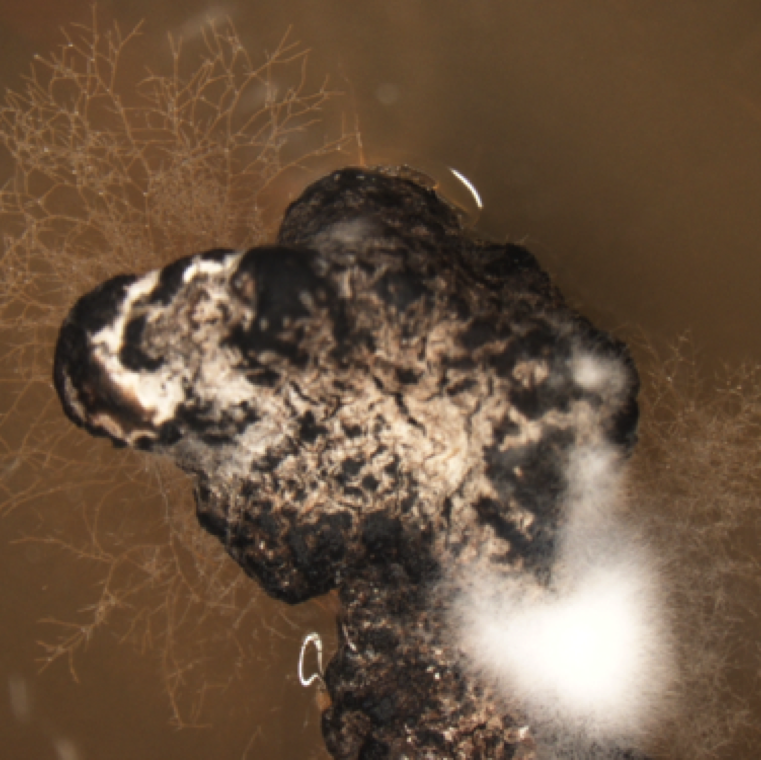
Mature sclerotia with a melanized outer layer and growth of mycelium, the vegetative part of the fungus from a dry sclerotia in artificial media.
SCLEROTINIA BLIGHT
Fungal causal agent: Sclerotinia sclerotiorum
Tomato diseases
